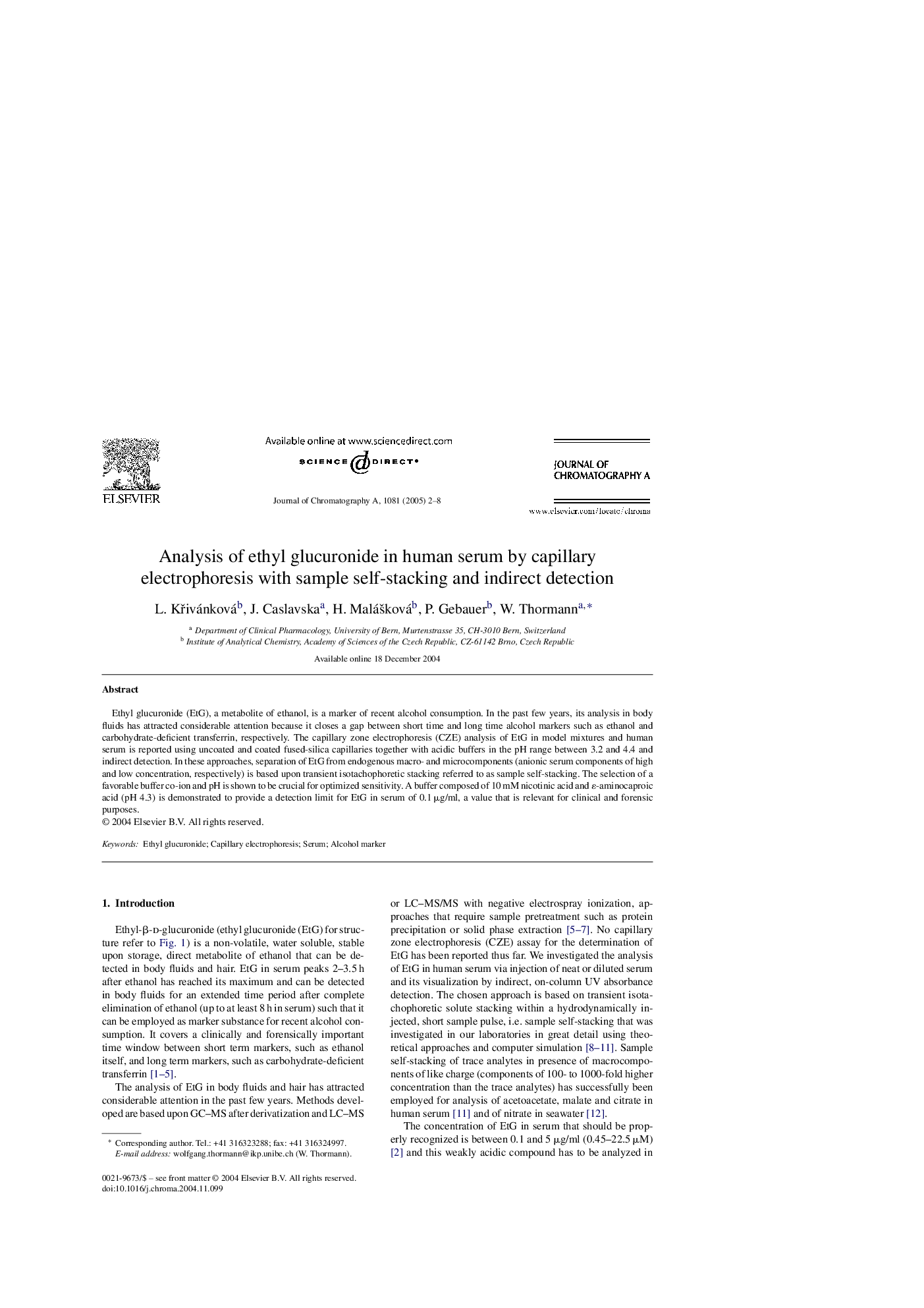| Article ID | Journal | Published Year | Pages | File Type |
|---|---|---|---|---|
| 10548002 | Journal of Chromatography A | 2005 | 7 Pages |
Abstract
Ethyl glucuronide (EtG), a metabolite of ethanol, is a marker of recent alcohol consumption. In the past few years, its analysis in body fluids has attracted considerable attention because it closes a gap between short time and long time alcohol markers such as ethanol and carbohydrate-deficient transferrin, respectively. The capillary zone electrophoresis (CZE) analysis of EtG in model mixtures and human serum is reported using uncoated and coated fused-silica capillaries together with acidic buffers in the pH range between 3.2 and 4.4 and indirect detection. In these approaches, separation of EtG from endogenous macro- and microcomponents (anionic serum components of high and low concentration, respectively) is based upon transient isotachophoretic stacking referred to as sample self-stacking. The selection of a favorable buffer co-ion and pH is shown to be crucial for optimized sensitivity. A buffer composed of 10 mM nicotinic acid and É-aminocaproic acid (pH 4.3) is demonstrated to provide a detection limit for EtG in serum of 0.1 μg/ml, a value that is relevant for clinical and forensic purposes.
Related Topics
Physical Sciences and Engineering
Chemistry
Analytical Chemistry
Authors
L. KÅivánková, J. Caslavska, H. MaláÅ¡ková, P. Gebauer, W. Thormann,
